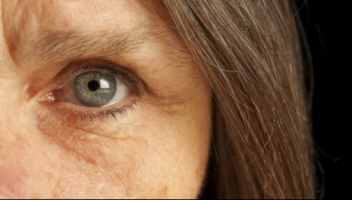- Home
- Editorial
- News
- Practice Guidelines
- Anesthesiology Guidelines
- Cancer Guidelines
- Cardiac Sciences Guidelines
- Critical Care Guidelines
- Dentistry Guidelines
- Dermatology Guidelines
- Diabetes and Endo Guidelines
- Diagnostics Guidelines
- ENT Guidelines
- Featured Practice Guidelines
- Gastroenterology Guidelines
- Geriatrics Guidelines
- Medicine Guidelines
- Nephrology Guidelines
- Neurosciences Guidelines
- Obs and Gynae Guidelines
- Ophthalmology Guidelines
- Orthopaedics Guidelines
- Paediatrics Guidelines
- Psychiatry Guidelines
- Pulmonology Guidelines
- Radiology Guidelines
- Surgery Guidelines
- Urology Guidelines
Eye calcifications an indicator of age-related macular degeneration

Early changes in the retina could be an indicator of age-related macular degeneration (AMD), according to a new study.
The study, published in the journal Science Translational Medicine, finds that calcified nodules in retinal drusen are associated with diseases progression in patients with AMD. The findings suggest that the use of multimodal clinical imaging to determine the composition of macular calcifications may help to direct therapeutic strategies and outcome measures in AMD.
Christine A. Curcio, professor, Department of Ophthalmology, School of Medicine, the University of Alabama at Birmingham, Birmingham, AL, USA, and colleagues made the ground-breaking discovery that the calcified nodules in the retina — the thin layer of tissue that lines the back of the eye — increase the risk for progression to advanced AMD.
Also Read: Anti-VEGF Inj. an effective treatment of Neovascular age-related Macular Degeneration
The findings will impact diagnosis and prognosis using modern imaging tools for people with AMD, which is the leading cause of vision impairment in older individuals worldwide.
Currently, there is no treatment for the majority of patients with AMD, and irreversible visual loss has been associated with depression and other health problems. Experts carried out the research because of the urgent need to identify early events that might lead to visual loss so that these triggers can be targeted. Better visualization of the disease timeline is an important step.
The research used clinical imaging in patients from ophthalmologists K. Bailey Freund, M.D., and Srinivas R. Sadda, M.D., and molecular analysis of eye samples from Curcio’s laboratory by co-first author Matthew Pilgrim, a Ph.D., student at University College London.
Also Read: Mediterranean Diet protects against age-related macular degeneration
The team discovered that large calcified nodules in the retina are indicators of progression risk for late stages of AMD, because they were associated with degeneration of nearby retinal cells. The experts believe that, with further research and with early intervention, some patients could actually be offered simple measures such as modifying their diet.
“By fully understanding the causes behind the changing environment in which these large, damaging nodules grow, we could design new ways to intervene with their growth earlier in the disease process than is currently possible,” Curcio said.
Curcio says the identification of these risks associated with disease progression in the eye, especially in the retina, could become a diagnostic tool for monitoring the progression of retinal degeneration with imaging.
“This allows ophthalmologists to counsel their patients more wisely and also allows us to think about slowing or halting the progression of disease earlier in its course,” she said.
Imre Lengyel, Ph.D., senior lecturer and researcher in the School of Medicine, Dentistry and Biomedical Sciences at Queen’s University Belfast, says their research revealed that early changes in the back of the eye can lead to the build-up of hard mineral deposits, made of calcium and phosphate, that may incorporate other types of trace metals, like magnesium.
“The build-up of these mineral deposits is an indicator of irreversible damage of the retina,” Lengyel said.
Treatment of AMD can be expensive, as are caregiving and institutional living. In the publication, researchers said that, based on the global burden of AMD, the cost is estimated to be more than $300 billion worldwide. Therefore, delaying progression of AMD or, better yet, minimizing or eliminating risk factors could lead to a substantial reduction in costs borne by health care payers, individuals, and society.
For further reference log on to 10.1126/scitranslmed.aat4544

Disclaimer: This site is primarily intended for healthcare professionals. Any content/information on this website does not replace the advice of medical and/or health professionals and should not be construed as medical/diagnostic advice/endorsement or prescription. Use of this site is subject to our terms of use, privacy policy, advertisement policy. © 2020 Minerva Medical Treatment Pvt Ltd